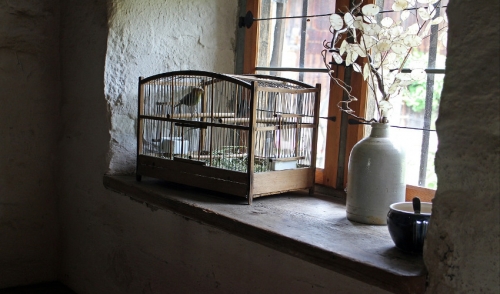Many great pets – hamsters, guinea pigs, chinchillas, mice, rabbits, birds, ferrets, sugar gliders and more – can be perfectly happy and at home in the right cage. But which cage is best and how can you offer the best care to a caged pet?
Choosing the Right Cage
No pet will be healthy, happy and comfortable without the right living arrangement, and for a caged pet, that means a suitable cage or enclosure. Fortunately, there are many good options to choose from to give your pet the very best home.
When selecting a cage for your pet, consider…
- Cage Size: A pet needs room to move around comfortably in their cage, even jumping, hopping or running a bit as they explore. Choose a cage appropriate for your pet's adult size, and take into account if you will have multiple pets in the same cage. A cage for two hamsters must be larger than a cage for a single hamster, for example, even if both pets are small.
- Mesh Width: The cage structure should be small and tight enough so there is no possibility that your pet could escape for unauthorized outside exploration. Bear in mind that many small pets can actually squeeze through very small holes, and they can be adept at climbing up cage sides to reach other openings.
- Flooring: The cage floor may need an additional covering or tray to provide safe, comfortable footing for your pet's sensitive feet. Choose litter or bedding material that is safe and comfortable for pets to lie in, walk on or dig through. Your pet's feet should not be able to slip through or get stuck in any flooring mesh.
- Tiers: Make the most of cage space by providing interior tiers for your pet to climb and explore. Some pets will prefer multiple levels connected by ramps, ladders or tubes, while other pets may only use a slightly elevated platform or two. For all caged animals, however, using vertical space can create interest and provide exercise in their contained homes.
- Material: Most pet cages are metal, though the type of metal can vary and may or may not be coated or treated. Other cages can be plastic, or some caged pets will do best in a solid glass tank or aquarium setting. Choose the material that will keep your pet safe and comfortable while minimizing the risk of injuries, escape attempts or unwanted chewing on the mesh.
Proper Cage Care
Even the perfect cage can be a prison for your pet if it is not properly cared for. To keep your pet as happy as possible in the cage…
- Clean the cage regularly. All pet enclosures need regular cleaning when the surfaces are wiped and disinfected, bedding is replaced and any debris such as feces or leftover food is removed. Use scent-free cleaners that are safe for pets, and wipe down all the cage surfaces as well as accessories when it is cleaned.
- Repair the cage as needed. Even a small cage pet can be industrious at clawing and gnawing, and a small broken spot on the cage can lead to painful injuries and infections. Inspect the cage regularly to be sure there is no damage, and repair any broken clasps, locks, hinges or other parts immediately.
- Position the cage safely. Some pets prefer a quiet, low-key room, while others are happiest near the hub of family activity. Put your pet's cage in an appropriate location, but avoid putting it near heating or cooling vents, open windows, fireplaces or other features that could quickly overheat or chill your pet. Also be sure the cage will not be jostled or tipped easily.
- Add interesting and essential accessories to the cage. Choose the appropriate food and water dishes or water bottles, and consider adding a den-like nook your pet can retreat to if they are scared or uncomfortable. Toys or exercise equipment can also be useful cage accessories. All items should be appropriate and safe for your pet, and you should check them regularly to be sure they are not posing any problems. Changing toys or rearranging the cage periodically can also provide stimulation and interest to your pet.
Outside the Cage
All cage pets need some time outside their cage. This may be a brief break while the cage is cleaned, or it could be a regular outside playtime for exercise, bonding, handling or training. Different types of pets have different needs, however, and you need to choose the best options for your pet's personality and temperament.
It may seem harsh to keep a pet in a cage nearly all the time, but with the right enclosure and proper care, a cage pet can have a happy, healthy life that is safe and comfortable in their cage.






Comments